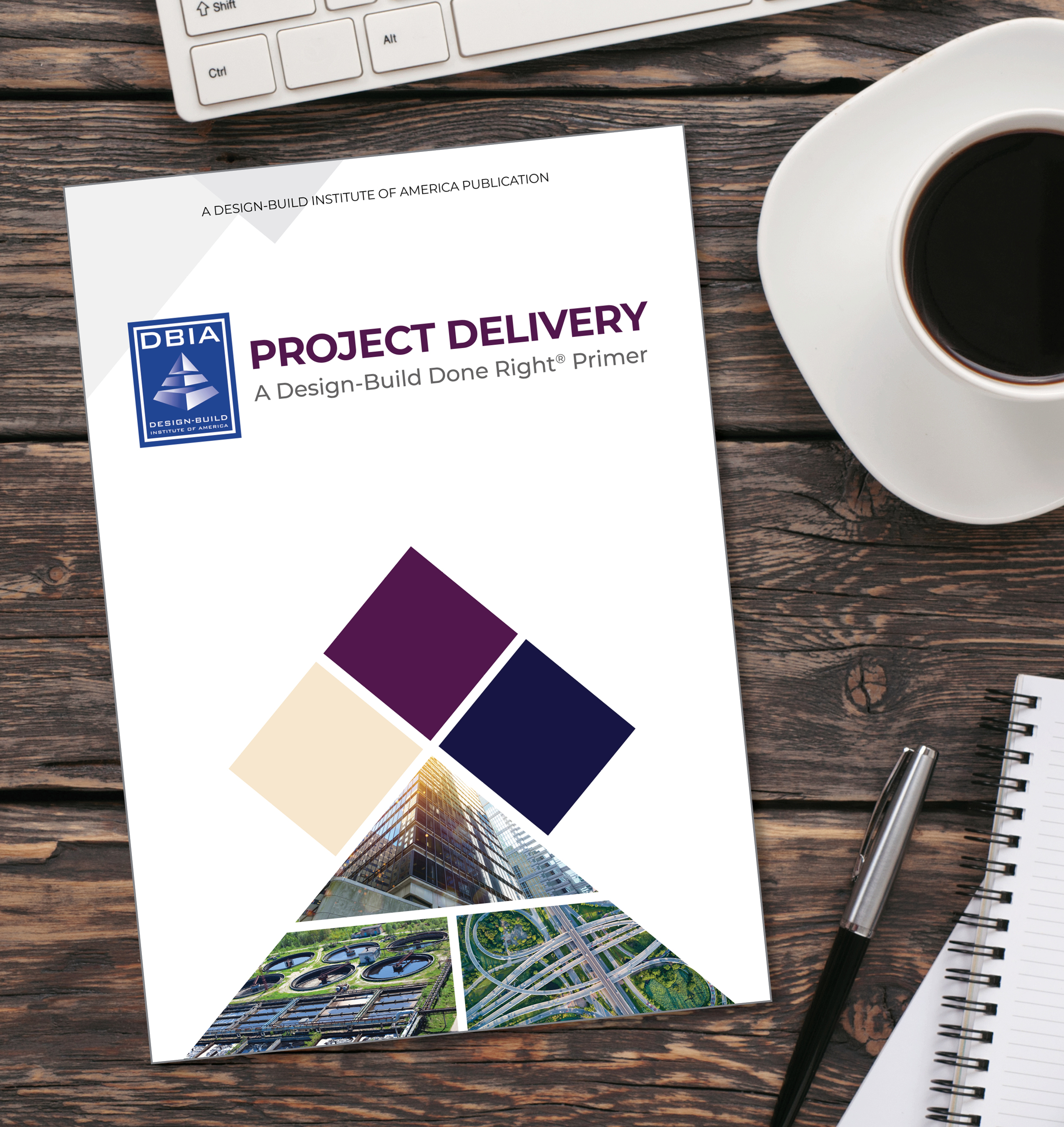
The Design-Build Institute of America (DBIA) has released its Project Delivery Primer, focusing on ensuring Owners have the appropriate information to make the vital early step of choosing the right delivery system for their projects. The enhanced Project Delivery Primer updates and combines two previous resources –– What is Design-Build? and Choosing a Project Delivery Method –– to reflect changes in the industry, including the growth of design-build and decline of design/bid/build.
Choosing a project delivery method is one of the most fundamental decisions facing Owners when developing their acquisition strategy, and DBIA’s Project Delivery Primer provides guidance for choosing the right system for their projects. An Owner’s decision on the method of delivery drives how all other parties are brought into and engaged in the project, necessitating clear steps for planning, design and construction to ensure team members are on the same page throughout.
Some key areas covered in the Project Delivery Primer include:
- Outlining the relationship between key factors of a project’s Strategic Acquisition Plan, including project delivery system, procurement method and contract format;
- Describing the relationships between and responsibilities of the parties involved in a project;
- Comparing and contrasting major project delivery systems: design-build, construction management at risk and design/bid/build.
- Detailing factors an Owner should consider for each project delivery system when formulating a strategic acquisition plan prior to procurement of design and construction services.
Streamlining DBIA Resources
In 2015, design-build was still regarded by many as an alternative delivery system. Thus, Owners undertaking capital projects needed to understand the basic principles of design-build, what made it distinct from other project delivery methods and what to consider when choosing the right method. DBIA’s previous Primers, What is Design-Build? and Choosing a Project Delivery Method, covered the “what,” “why” and “how” for Owners more broadly.
Today, design-build is no longer an alternative project delivery system, with projections that 47% of construction projects will be design-build by 2026. DBIA knew it was time for a resource that reflected the growth and provided Owners with the information they needed to choose a delivery method for today’s –– and tomorrow’s –– projects. That seismic growth, said chair of the DBIA Core Curriculum and Exam Update Committee Dan Rawlins, RA, DBIA, “influenced the updates we needed to make to our resources.” The committee elected to combine the two earlier Primers into one new Project Delivery Primer. This document still provides a clear definition of design-build and a comparison to other methods of delivery, but it goes a step further by breaking down procurement methods for design-build delivery, thus emphasizing the flexibility of design-build.
The Project Delivery Primer emphasizes the need for Owners to choose the path that leads to the desired project outcomes. The new resource sheds the neutrality evident in 2015’s comparison between design-build, construction management at risk (CMAR) and design/bid/build but maintains that Owners must make the strategic, informed decisions regarding the method that’s right for their projects. Rawlins said, “Owners must still go into the marketplace deliberately and strategically, and the Project Delivery Primer more intentionally explains the options available to them.” So while the new Project Delivery Primer does, in fact, advocate for design-build, it does so with the understanding that Owners should proactively choose what is best for the goals of their project. To facilitate that proactive and informed process, an expanded comparison section, with a variety of factors an Owner should consider, was added in response to industry requests for DBIA to provide further guidance in this area.
DBIA is dedicated to promoting Design-Build Done Right®, which means understanding when design-build is the right delivery system for a project –– and when it is not. “We hope the Project Delivery Primer will help many Owners navigate these extremely important first steps in any project,” Rawlins reflected, adding, “How the Owner proactively acts leads how everyone else reacts, and we want to front-load proper planning to ensure project success.”
The new Project Delivery Primer, along with many other Design-Build Done Right® resources, can be downloaded in the DBIA Bookstore at no cost.
